Life in America: The Reagan Years, A Webography
For Further Reading: Atwood and The Handmaid's Tale
Metafiction: The Theory and Practice of Self-Conscious Fiction, by Patricia Waugh (1984)
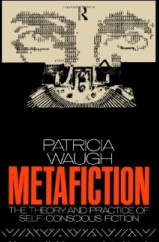
Metafiction begins by surveying the state of contemporary fiction in Britain and America and explores the complex political, social and economic factors which influence critical judgment of fiction. The author shows how, as the novel has been eclipsed by the mass media, novelists have sought to retain and regain a wide readership by drawing on the themes and preoccupations of these forms. Making use of contemporary fiction by such writers as Fowles, Borges, Spark, Barthelme, Brautigan, Vonnegut and Barth, and drawing on Russian Formalist theories of literary evolution, the book argues that metafiction uses parody along with popular genres and non-literary forms as a way not only of exposing the inadequate and obsolescent conventions of the classic novel, but of stuggesting the lines along which fiction might develop in the future. BUY IT HERE
Postmodernist Fiction, by Bryan McHale (1987)
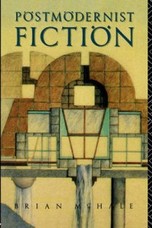
Like it or not, the term "postmodernism" seems to have lodged itself in our critical and theoretical discourses. We have a postmodern architecture, a postmodern dance, perhaps even a postmodern philosophy and a postmodern condition. But do we have a postmodernist fiction? In this trenchant and lively study Brian McHale undertakes to construct a version of postmodernist fiction which encompasses forms as wide-ranging as North American metafiction, Latin American magic realism, the French New New Novel, concrete prose and science fiction. Considering a variety of theoretical approaches including those of Ingarden, Eco, Dolezel, Pavel, and Hrushovski, McHale shows that the common denominator is postmodernist fiction's ability to thrust its own ontological status into the foreground and to raise questions about the world (or worlds) in which we live. Far from being, as unsympathetic critics have sometimes complained, about nothing but itself -- or even about nothing at all -- postmodernist fiction in McHale's construction of it proves to be about (among other things) those hardy literary perennials, Love and Death. This is one of the most lively and lucid studies of contemporary fiction around. Whether or not you agree with his provocative definition of the postmodern, McHale's argument is always engaging, bold, and forceful. BUY IT HERE
Approaches to Teaching Atwood's The Handmaid's Tale and Other Works, Eds. Sharon R. Wilson, et al. (1996)
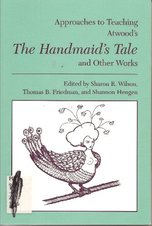
"The volume entirely lives up to my expectations: it contextualizes Atwood within Canadian culture rather than treating her 'just like' an American or British writer and provides usable background materials and classroom examples for college teachers of the astonishing variety of courses in which Atwood is taught." -Annis Pratt, author of Dancing with Goddesses: Archetypes, Poetry, and Empowerment
Margaret Atwood's works, especially The Handmaid's Tale, are widely taught not only in literature courses but also in economics, political science, sociology, film, and business courses. Her writings span a variety of genres and address such themes as identity, Canadian nationalism, struggle for survival, sexual politics, and shamanism; this rich and diverse range has proved fertile ground for teachers and critics alike. Approaches to Teaching Atwood's The Handmaid's Tale and Other Works is the first book to focus on the teaching of this writer's oeuvre exclusively. BUY IT HERE
Margaret Atwood's works, especially The Handmaid's Tale, are widely taught not only in literature courses but also in economics, political science, sociology, film, and business courses. Her writings span a variety of genres and address such themes as identity, Canadian nationalism, struggle for survival, sexual politics, and shamanism; this rich and diverse range has proved fertile ground for teachers and critics alike. Approaches to Teaching Atwood's The Handmaid's Tale and Other Works is the first book to focus on the teaching of this writer's oeuvre exclusively. BUY IT HERE
Margaret Atwood's The Handmaid's Tale (Bloom's Guides), by Harold Bloom (2003)
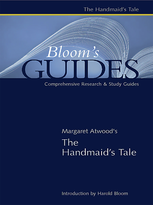
Margaret Atwood's The Handmaid's Tale, part of Chelsea House Publishers' Bloom's Guides collection, presents concise critical excerpts from The Handmaid's Tale to provide a scholarly overview of the work. This comprehensive study guide also features "The Story Behind the Story," which details the conditions under which The Handmaid's Tale was written. This title also includes a short biography on Margaret Atwood and a descriptive list of characters. BUY IT HERE
Margaret Atwood: A Critical Companion, by Nathalie Cooke (2004)
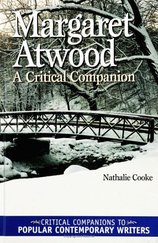
This book offers readers a concise introduction to Atwood's published novels and the central themes motivating her writing. The volume starts with an overview of the author's biography and the relationship of her writing to relevant literary traditions. Because Atwood is internationally renowned, many commentaries ignore the Canadian roots of her work. Cooke corrects this oversight by sketching the ways in which her work is shaped by, and has shaped, the Canadian literary scene. As the author of a full-length Atwood biography, Cooke is able to summarize feminist, Canadian nationalist, and postmodern influences on Atwood's work and on her development as a writer. The book offers close scrutiny of three illustrative works: Cat's Eye as the artist novel, The Handmaid's Tale as a dystopian novel, and The Blind Assassin as a villainness novel.
This book extends the dialogue surrounding Atwood's work in several important ways. As a book written by a Canadian about a Canadian writer, it illustrates how readings of Atwood's work can be significantly enriched through attention to the Canadian literary and cultural context. Noting that Atwood's work not only entertains but also challenges and disturbs, it argues that all of Atwood's novels can be read as satires that expose society's double standards. By locating the beginnings of satire as far back as Atwood's first published novel, and tracing it in Atwood's later novels as the impulse behind challenges to character (in the artist novels), setting (in the dystopic fiction), and plot (in the villainess novels), this study provides a startlingly original interpretation of The Blind Assassin and new insights into the earlier novels. BUY IT HERE
This book extends the dialogue surrounding Atwood's work in several important ways. As a book written by a Canadian about a Canadian writer, it illustrates how readings of Atwood's work can be significantly enriched through attention to the Canadian literary and cultural context. Noting that Atwood's work not only entertains but also challenges and disturbs, it argues that all of Atwood's novels can be read as satires that expose society's double standards. By locating the beginnings of satire as far back as Atwood's first published novel, and tracing it in Atwood's later novels as the impulse behind challenges to character (in the artist novels), setting (in the dystopic fiction), and plot (in the villainess novels), this study provides a startlingly original interpretation of The Blind Assassin and new insights into the earlier novels. BUY IT HERE
The Cambridge Companion to Margaret Atwood, Ed. Coral Ann Howells (2006)
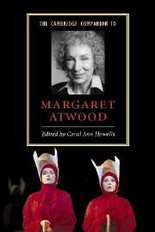
"The Cambridge Companion to Margaret Atwood boasts an impressive array of essays by international Atwood scholars. The sense of Atwood that emerges...is of a writer who enacts Canadianness in an increasingly global world and who is committed to questioning the use and abuse of power on a variety of levels..." -Laura M. Robinson, Canadian Literature
"Coral Ann Howell's book is exactly what its title suggests: a companion. Neither handmaiden, following far behind the writer and her critics with overly respectful steps, nor master, leading the way and forcing the writer and her works into pigeonholes and places they should not be. Rather, a companion - of sound and agile mind as well as of engaging demeanor, able to keep pace alongside and offer lively conversation and insights along the way." -Nathalie Cooke, McGill University, University of Toronto Quarterly
Margaret Atwood's international celebrity has given a new visibility to Canadian literature in English. This Companion provides a comprehensive critical account of Atwood's writing across the wide range of genres within which she has worked for the past forty years, while paying attention to her Canadian cultural context and the multiple dimensions of her celebrity. The main concern is with Atwood the writer, but there is also Atwood the media star and public performer, cultural critic, environmentalist and human rights spokeswoman, social and political satirist, and mythmaker. This immensely varied profile is addressed in a series of chapters which cover biographical, textual, and contextual issues. The Introduction contains an analysis of dominant trends in Atwood criticism since the 1970s, while the essays by twelve leading international Atwood critics represent the wide range of different perspectives in current Atwood scholarship. BUY IT HERE
"Coral Ann Howell's book is exactly what its title suggests: a companion. Neither handmaiden, following far behind the writer and her critics with overly respectful steps, nor master, leading the way and forcing the writer and her works into pigeonholes and places they should not be. Rather, a companion - of sound and agile mind as well as of engaging demeanor, able to keep pace alongside and offer lively conversation and insights along the way." -Nathalie Cooke, McGill University, University of Toronto Quarterly
Margaret Atwood's international celebrity has given a new visibility to Canadian literature in English. This Companion provides a comprehensive critical account of Atwood's writing across the wide range of genres within which she has worked for the past forty years, while paying attention to her Canadian cultural context and the multiple dimensions of her celebrity. The main concern is with Atwood the writer, but there is also Atwood the media star and public performer, cultural critic, environmentalist and human rights spokeswoman, social and political satirist, and mythmaker. This immensely varied profile is addressed in a series of chapters which cover biographical, textual, and contextual issues. The Introduction contains an analysis of dominant trends in Atwood criticism since the 1970s, while the essays by twelve leading international Atwood critics represent the wide range of different perspectives in current Atwood scholarship. BUY IT HERE
Waltzing Again: New & Selected Conversations with Margaret Atwood, by Margaret Atwood (2006)
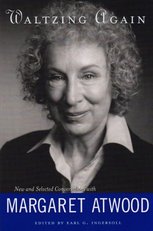
The title of this collection comes from a statement from its celebrated subject, author and poet Margaret Atwood, on interviewing: "I don't mind 'being interviewed' any more than I mind Viennese waltzing-that is, my response will depend on the agility and grace and attitude and intelligence of the other person." Atwood fills her dance card with these 21 interviews, dropping nimble observations on her interviewers (Joyce Carol Oates among them) regarding the nature of writing ("I think most writers share this distrust of language-just as painters are always wishing there were more colors, more dimensions"), Canadian literary culture ("like a group of figures dancing with considerable vigor and some grace on the edge of a precipice"), and the creative process. Atwood is lively, not afraid of chiding her interviewers ( "Are you asking me or are you asking the book?") and frequently brilliant in her discussion of feminism, her native land, her contemporaries and her work. Fans of Atwood will especially enjoy the more offbeat career moments she revisits-like the time she had to hold a book signing in the men's underwear department of a store in Alberta. BUY IT HERE
Margaret Atwood: Feminism and Fiction, by Fiona Tolan (2007)
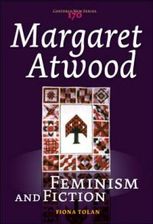
Margaret Atwood: Feminism and Fiction takes a new look at the complex relationship between Margaret Atwood's fiction and feminist politics. Examining in detail the concerns and choices of an author who has frequently been termed feminist but has famously rejected the label on many occasions, this book traces the influences of feminism in Atwood's work and simultaneously plots moments of dissent or debate. Fiona Tolan presents a clear and detailed study of the first eleven novels of one of Canada's most prominent authors. Each chapter can be read as an individual textual analysis, whilst the chronological structure provides a fascinating insight into the shifting concerns of a popular and influential author over a period of nearly thirty-five years. BUY IT HERE
Margaret Atwood: Essays on Her Works, Ed. Branko Gorjup (2008)
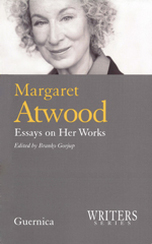
Examining her dynamic and perpetually progressing nature as a writer, this collection of essays on Margaret Atwood tackles a multiplicity of issues, from the destruction of the environment, the role of women in society, and the spiritual alienation caused by consumerism, to the desensitizing nature of mass culture, the loss of individual liberties, and the responsibility of the writer and limits of fiction. The volume's contributors include Gayle Greene, Coral Howells, Lorna Irvine, Stephanie Lovelady, Susan Jaret McKinstry, Jennifer Murray, Caterina Ricciardi, Barbara Hill Rigney, and Roberta Rubenstein. BUY IT HERE
Engendering Genre: The Works of Margaret Atwood, by Reingard M. Nischik (2010)
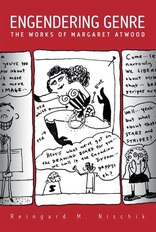
In Engendering Genre, renowned Margaret Atwood scholar Reingard M. Nischik reveals the relationship between gender and genre in Atwood’s works. The author approaches Atwood’s oeuvre by genre – poetry, short stories, novels, criticism – and examines them individually. She explores how gender issues influence each of them and how Atwood has developed these genres to be gender-sensitive in both their content and form. She argues that gender and genre are inherently complicit in Atwood’s work: they converge to critique the intrinsically gender-biased designs of traditional genres. This combination of gender and genre results in the recognizable Atwoodian style that blurs and blends the boundaries of conventional genres, exploring them in new ways. The book concludes with an interview with Margaret Atwood on her career, titled “From Survivalwoman to Literary Icon." BUY IT HERE
